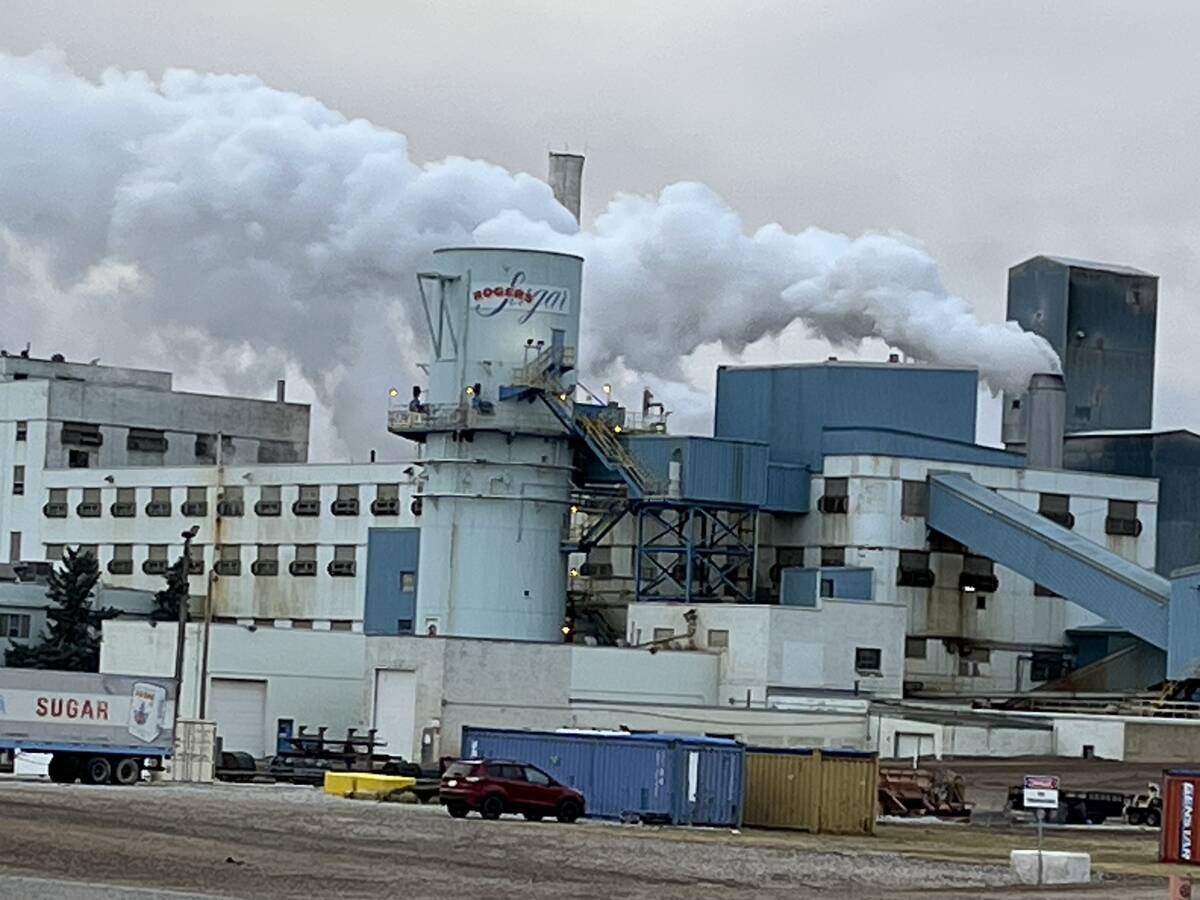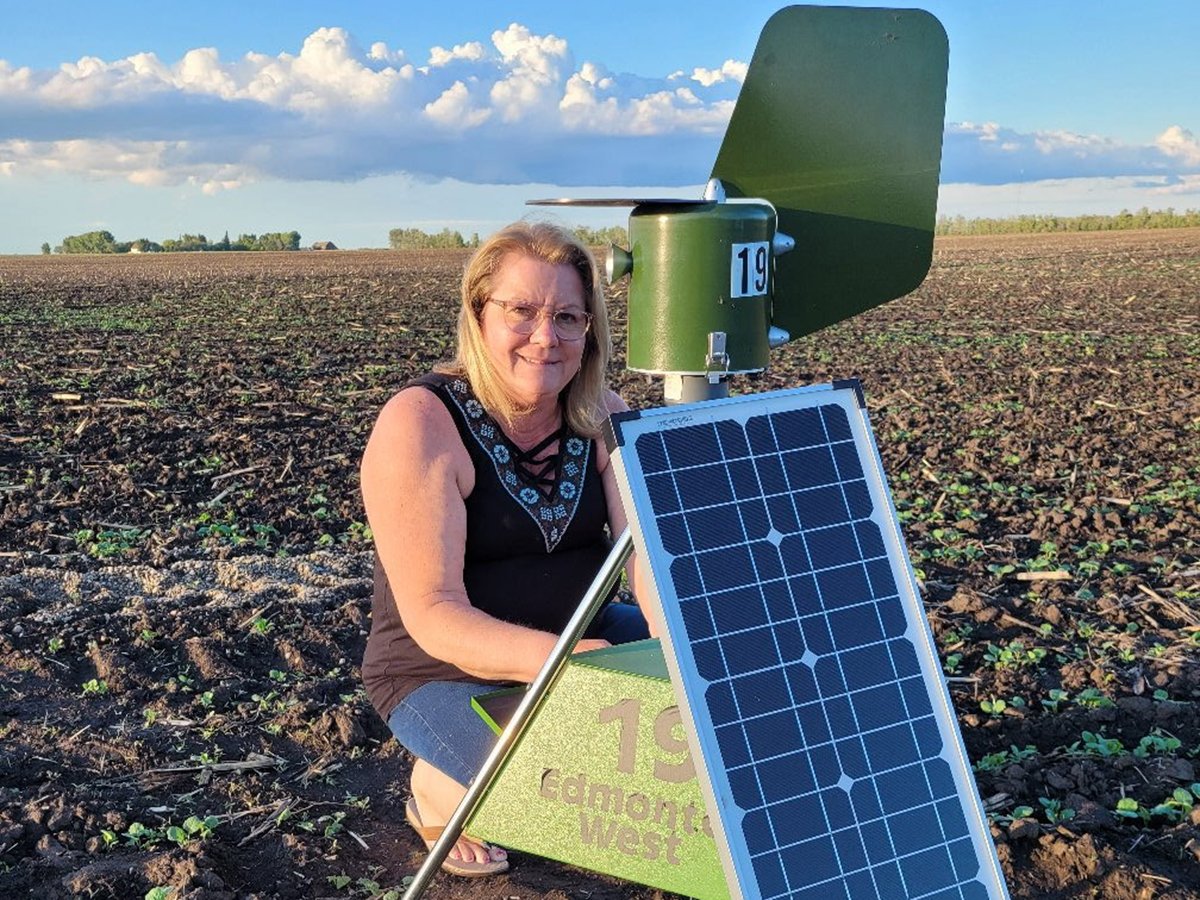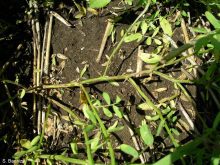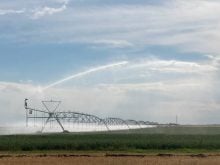Another potato-growing season is in the books as harvest gains full steam, alongside another successful spore-trapping program in the fight against blight in Alberta.
Late blight is a fungal that causes mold symptoms on potatoes that can be potentially devastating when left uncontrolled in fields. Major outbreaks occur occasionally in Alberta, the last being in 1993. Since 2010, there have been reports of late blight in potatoes.
But to help ensure another 1993 is never re-visited, the Potato Growers of Alberta adopted its Insect Monitoring and Spore Trapping Program in 2014.
Read Also

Sugar beet harvest underway in southern Alberta
Alberta Sugar Beet Growers hosts field tour to educate the public on the intricacies of the crop, its harvest process, and contracts with Lantic Sugar
Going from approximately mid-June to early September, the vigilant application of the program across the province has put the disease, which also affects tomatoes, eggplants, peppers, petunias and solanaceous weeds, to the fringes in how well it is monitored. When minor outbreaks occur, the proactive program ensures they do not become major ones.
“We have traps all over the province, strategically located in the growing areas. Those traps are sampled every single day and once a week those samples are sent to the lab and tested,” said Terence Hochstein, PGA executive director.
“Not only does it pick up late blight, it will pick up early blight and other airborne things. There might be a few days it picks up a few spores, but if it becomes a consistent pattern, then we go find it.”
Promax Agronomy Services is the managing partner that helps run the program for PGA, where buy in on all levels of agricultural producers has led to success for the program.
“Our processors are all on board, our ag retailers are all on board, the industry is on board, we all work together,” said Hochstein, who added with a chuckle that perhaps chemical salespeople at first were resistant to the program. “They couldn’t sell all the chemical because they were losing sales. But now they are huge proponents of this, because they understand that going to spray fungicides over and over and over again creates resistance. Insecticides, you’re killing beneficials, which may or may not harm your crop. So it was a win all the way around.”
Spread across the province from Spruce Grove to Stirling, 17 spore traps and 80 insect cards are strategically placed to give complete coverage of all potato-growing areas in Alberta. The program has allowed the industry to only spray for late blight and insecticides when absolutely necessary, as opposed to previous blanket spraying of every acre.
“Every time we don’t have to spray a fungicide, on average, that’s saving $2 million for the growers, and it’s over 60,000 kilograms of active ingredient that we don’t have to release into the environment. Previous to us with this program, guys were spraying every 10-14 days. We did the math and the cost per acre, the active ingredient, that’s a lot of money. It’s a lot of kilograms of an active that we didn’t need to apply,” said Hochstein. Each time growers don’t have to blanket spray an insecticide with a three-pass full season application across all acres, $10 million in savings is realized.
Hochstein thought late blight would rear its ugly head this year in southern Alberta when July was greeted with rain and dampness, but it emerged unscathed. Late blight normally thrives in cool to moderate temperatures and high humidity with prolonged dampness from rain or dew. Although in the west, a strain of US-23 could survive in dry and hot climates for potato tubers.
If it starts becoming a pattern in traps in a certain area of the province, wind patterns are identified in the region with triangulation estimates, and conversations start with growers in the area to isolate the problem. It has made for more focused counter measures compared to days of old that looked for blanket panicked responses. The more you spray unnecessarily, the faster you get strains developing resistances to the counter measures.
“Now you have the ability to identify more, and maybe all you do is spray the perimeter of your field, or you don’t spray if it doesn’t hit the threshold. We felt it was better putting science to this, versus emotion and reaction,” said Hochstein.
“Everything changes over time. You get different strains and different situations. It’s education on behalf of the growers.”
Promax Agronomy Services build and maintain spore and insect traps along with doing all the lab work. But, it’s volunteer hands that power the initiative, be it University of Lethbridge students, ag retailers lending their staff, or summer students with processors. It is that level of collaboration that makes sure late blight remains minor inconveniences rather than a plague that once caused the Irish Potato Famine from 1845-1852. The program is part of an overall education process that applies not only to the major producers that account for $2.31 billion to Alberta’s economy (2022 numbers), but the green-thumb gardener as well.
“It’s not the home growers’ fault necessarily. They just don’t know. We want to educate everybody. I get calls every year asking me to come look at their potato patch,” said Hochstein. “Here’s what you look for. Don’t just dig it out and throw it into the compost pile. Tie it into a black garbage bag and bury it,” said Hochstein. “That little patch of potatoes in your backyard, if they go down early, they can affect thousands of acres downwind. Spores will travel.”















